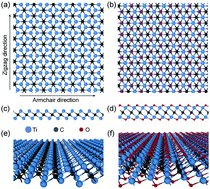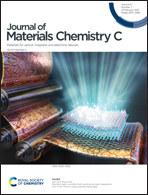Oxygen functionalization-induced crossover in the tensile properties of the thinnest 2D Ti2C MXene
Abstract
Transition metal carbides/nitrides (MXenes) are a newly emerging class of two-dimensional (2D) materials with technically robust properties, which can be finely tuned via planar surface functionalization. Herein, the critical role of oxygen (O-)functionalization on the tensile mechanical characteristics of the thinnest 2D Ti2C MXene is explored through molecular dynamics (MD) simulations with the first-principles based ReaxFF forcefield. It is demonstrated that the Ti2C sheet shows unique tensile mechanical characteristics that pronouncedly vary with the content of O-functionalization and the stretching direction. In both loading directions, there is an apparent crossover in Young's modulus, failure strength and failure strain. Intriguingly, under armchair directional load, a structural transition from the 1T to the 1T′ phase occurs in the Ti2C region, which has been observed in many transition metal dichalcogenides. However, under zigzag directional strain, two distinct structural transformations take place in pristine and fully O-functionalized Ti2C sheets. When the load is removed, these three structural transformations are reversible, which can be critically understood by analyzing the bond configurations. This study provides important insights into the mechanical behavior and structural transformations of functionalized MXenes.



 Please wait while we load your content...
Please wait while we load your content...